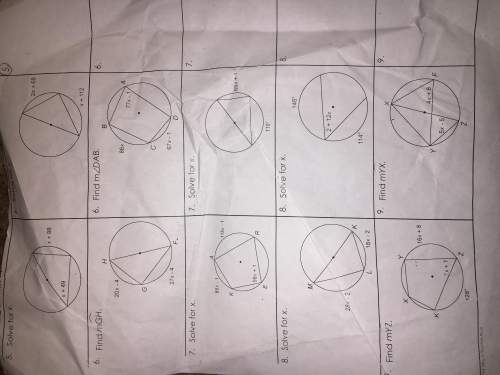
Mathematics, 17.09.2019 21:30 davidoj13
Bayes’ theorem deals with the calculation of posterior probabilities, which isn’t always a natural thing to do. we’re used to forward-chaining our probabilities (e. g., if we roll a 3 on a die, what’s the probability the second roll will give us a total of backward-chaining is less intuitive (e. g. if our total on the die was an 8, what’s the probability that the first roll was a since the rules of probability involve simple addition and multiplication, they work fine in both directions. the thing that makes posterior probability more difficult is that we simply aren’t used to thinking about things that way. our chapter reading provides an example of a diagnostic test for a rare disease. the resulting confidence in a positive test result is surprisingly low. discuss why that is so. what is happening in the interaction of the various probabilities that leads to this outcome?

Answers: 3
Another question on Mathematics

Mathematics, 21.06.2019 14:30
Given the parent function of [tex]f(x)=x^4[/tex], what change will occur when the function is changed to [tex]f(\frac{1}{2} x)[/tex]?
Answers: 3

Mathematics, 21.06.2019 15:30
Diane owes $387 to her brother. if she debits her bank account $161.25 a month to pay him back, how many months will it take her to pay off the debt?
Answers: 2

Mathematics, 21.06.2019 16:50
The parabola opens: y=√x-4 (principal square root) up down right left
Answers: 1

Mathematics, 21.06.2019 18:30
Which of the choices shown could be used to prove that aacp=abcp ?
Answers: 1
You know the right answer?
Bayes’ theorem deals with the calculation of posterior probabilities, which isn’t always a natural t...
Questions



Mathematics, 25.04.2020 04:23

Chemistry, 25.04.2020 04:23




Mathematics, 25.04.2020 04:23

Biology, 25.04.2020 04:23

Mathematics, 25.04.2020 04:23



Social Studies, 25.04.2020 04:23

Mathematics, 25.04.2020 04:23


Mathematics, 25.04.2020 04:23




Mathematics, 25.04.2020 04:23




